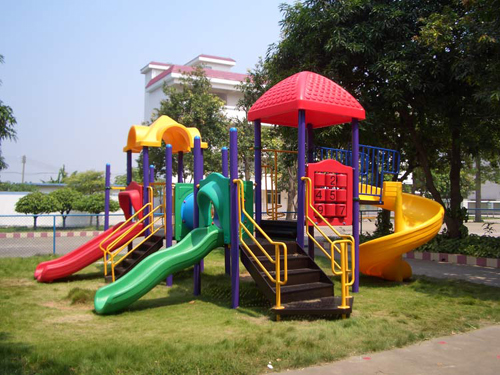Artificial turf is a ground surface that, with the help of synthetic fibers, is made to look like grass and is now commonly used in most sports arenas as a substitute for natural grass. It has grown in popularity in the last decade or so and is now also seen in many residential gardens and landscapes - and quite recently, artificial turf is now being used in playgrounds and parks for children, and today, we ask the question: do playgrounds need to substitute natural grass with artificial turf or not?
The first and foremost point that comes to mind is safety. Children tend to trip and fall all the time in playgrounds and the surface of the turf can prove to be unforgiving at times. The friction levels between skin and older generations of turf can cause burns and/or abrasions and these can to be quite painful in the summer when the turf is hottest. And speaking of which, they tend to heat quite a lot more than regular grass. Water helps cool them down but in areas where temperatures are searing, regular and/or periodic watering of the turf can't be done, or is of no use collectively: especially when playgrounds are brought into question.
The issue, however, can be eradicated completely with third-generation and later versions of artificial turfs that use a polyethylene yarn which is much safer.
Turfs aren't exactly environmentally friendly either. Some require a combination of sand, silicon and granulated rubber for the infill which could leach metals and other substances into the water table. But there are alternative ways to which are a lot safer.
Other than this, modern versions of artificial turf are more permanent installations and cannot be removed easily, should you want to revert back to natural grass again. This means you'd have to do a lot of research work before going for the option, otherwise the decision to get rid of natural grass could prove quite expensive.
But these points shouldn't dissuade you - there are still quite a lot of advantages of choosing it instead of natural grass. Like, for instance, they require very little or no maintenance, so you won't have to worry about hiring an individual who will regularly keep check of the turf. And they last much longer - so a playground would be an ideal place for its installation where kids regularly administer rough use. They are also a more viable option if your playground is subjected to a mildly hostile environment where natural grass wouldn't normally grow well.
Some turfs can be produced with interwoven optic fibers which can illuminate the playground from below. So not only will it look great, but also serve an important purpose when the sun goes down but play continues.
Now that you know all you need to know about artificial turfs, it shouldn't be hard to make a decision whether your playground or local park requires it or not. But as mentioned before, newer types of turf are permanent, so be sure to research and try any locality that features it first.




